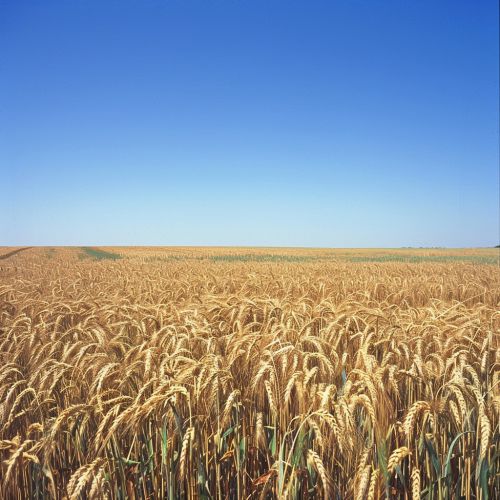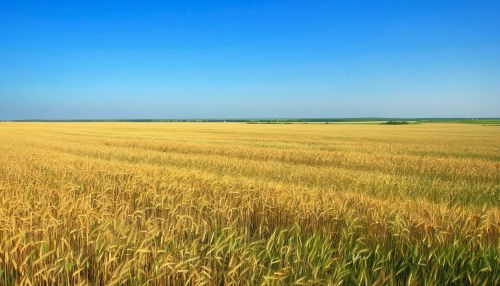Agriculture in Russia
Introduction
Agriculture in Russia is a significant sector of the economy, contributing to the country's food security and export revenues. The vast expanse of arable land, diverse climatic zones, and rich soil types provide a unique environment for a variety of agricultural activities. This article delves into the historical development, current state, and future prospects of Russian agriculture, highlighting key crops, livestock, and agricultural policies.
Historical Development
Pre-Soviet Era
Agriculture in Russia has a long history dating back to the early Slavic tribes. The Kievan Rus period saw the establishment of the first agricultural communities, primarily focused on subsistence farming. The introduction of the three-field system during the medieval period significantly improved crop yields.
Soviet Era
The Soviet period brought about radical changes in Russian agriculture. The collectivization policy of the 1930s aimed to consolidate individual landholdings into large, state-controlled farms known as kolkhoz and sovkhoz. While this policy led to initial disruptions and famines, it eventually resulted in the mechanization and industrialization of agriculture.
Post-Soviet Era
The dissolution of the Soviet Union in 1991 led to the privatization of agricultural land and the emergence of private farms. The transition period was marked by significant challenges, including a decline in production and investment. However, the early 2000s saw a resurgence in agricultural productivity, driven by market reforms and government support.
Climatic and Soil Conditions
Russia's vast territory encompasses a wide range of climatic zones, from the tundra in the north to the steppe in the south. The most agriculturally productive regions are located in the Black Earth Region, known for its fertile chernozem soil. This region, along with the Volga and Kuban areas, forms the backbone of Russian crop production.
Major Crops
Grains
Grain production is a cornerstone of Russian agriculture. The country is one of the world's largest producers and exporters of wheat, barley, and rye. The Krasnodar Krai and Rostov Oblast are key grain-producing regions.
Oilseeds
Russia is also a significant producer of oilseeds, particularly sunflower, soybean, and rapeseed. The Central Federal District and Volga Federal District are major areas for oilseed cultivation.
Vegetables and Fruits
Vegetable and fruit production is concentrated in the southern regions and the North Caucasus. Key crops include potatoes, cabbage, carrots, apples, and berries. The Stavropol Krai and Krasnodar Krai are notable for their horticultural output.
Livestock Farming
Livestock farming is another vital component of Russian agriculture. The country has a diverse livestock sector, including cattle, pigs, sheep, and poultry.
Cattle
Cattle farming is prevalent in the Central Federal District and Volga Federal District. Russia produces significant quantities of beef and dairy products, with Moscow Oblast and Tatarstan being key regions.
Pigs
Pig farming is concentrated in the Central Federal District and Volga Federal District. Russia is one of the largest producers of pork in the world, with Belgorod Oblast being a major hub.
Sheep
Sheep farming is primarily located in the North Caucasus and Southern Federal District. The country produces mutton and wool, with Dagestan and Kalmykia being significant regions.
Poultry
Poultry farming has seen substantial growth in recent years. The Central Federal District and Volga Federal District are leading producers of chicken and eggs, with Bryansk Oblast and Tatarstan being notable areas.
Agricultural Policies
The Russian government plays a crucial role in shaping agricultural policies. Key initiatives include subsidies, tax incentives, and investment in infrastructure.
Subsidies and Support
The government provides substantial subsidies to support farmers, including direct payments, input subsidies, and price supports. These measures aim to enhance productivity and ensure food security.
Land Reforms
Land reforms have been a critical aspect of agricultural policy. The introduction of private land ownership and the establishment of land markets have facilitated investment and modernization.
Export Policies
Russia has implemented various policies to promote agricultural exports. These include export subsidies, trade agreements, and the development of export infrastructure.
Challenges and Opportunities
Climate Change
Climate change poses significant challenges to Russian agriculture. Shifts in temperature and precipitation patterns can impact crop yields and livestock productivity. However, some regions may benefit from longer growing seasons and increased arable land.
Technological Advancements
Technological advancements offer opportunities for improving agricultural productivity. Precision farming, biotechnology, and digital agriculture are areas of significant potential.
Market Access
Access to domestic and international markets is crucial for the growth of Russian agriculture. The development of transport and logistics infrastructure, along with trade agreements, can enhance market access.
Future Prospects
The future of Russian agriculture looks promising, with potential for growth in both domestic and export markets. Continued government support, technological innovation, and sustainable practices will be key drivers of future success.
See Also


